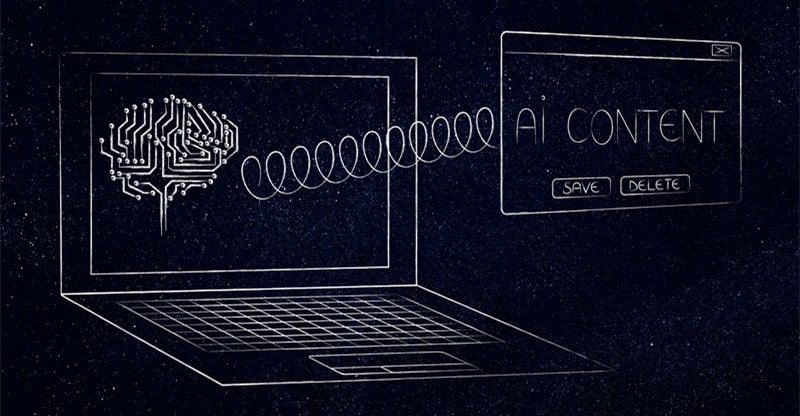Integrating AI Into Content Creation Without Sacrificing Quality
Artificial intelligence (AI) has made major waves since late 2022 when ChatGPT was released. Today, 23% of digital marketing professionals say they use generative AI to create copy, produce creative graphic designs, and edit important documents.
However, if you have ever entered a prompt into a generative large language model, you will know that the programs can generate some rather unusual responses. This drives home the reality that AI cannot create content on its own — at least, not yet.
Instead, use AI as the assistive tool that it is designed to be. This will help you retain a human touch in your content creation and will ensure that you are constantly producing trustworthy, reader-friendly marketing materials.
The Limits of AI
Artificial intelligence programs like ChatGPT and Google Bard are undeniably powerful. They are already changing the way we approach marketing and appear to be the future of social media content creation. Generative tools help marketing teams produce professional-grade graphics in an instant and can type out image descriptions in a few sections.
However, real writers are still essential — even in our increasingly automated world. Unlike large language processing models, AI writing tools cannot take constructive criticism, struggle to vary sentence length and style, and regularly produce inaccurate copy that will not pass your editorial guidelines. This means that turning the keys over to AI will actually increase the amount of time you spend on editing, revising, and researching.
Instead, you want to use a blend of AI and human writing when crafting your next content strategy. By blending human writers and AI tools, you ensure that all of your content is user-friendly, factually accurate, and compelling enough to grab the attention of real readers.
Editing Power
Content creators have been using technological tools to edit their work for decades. Ralph Gorin invented the first spelling corrector in 1971 and every modern word processing program has an in-built spelling and grammar check. In recent years tools like Grammarly have pushed the tech to new heights and now have the power to catch issues in real-time.
Editing AI software can help you create more visually appealing content, too. Adobe is currently adding to its suite and will release Adobe Sensei in 2024. Programs like Sensei are capable of using generative fill to enhance images, add contextually appropriate elements, and make intuitive changes to existing graphics.
However, AI editors are no match for human editors. Human oversight is essential if you want to introduce AI into your overall content strategy, as human editors can make strategic changes to content that AI cannot understand. Instead of replacing editors, empower them by offering access to premium tools like paid subscriptions to Grammarly and ChatGPT.
Similarly, you can encourage your writers to make use of large language models during the writing process. For example, if they are struggling to match the tone that your audience expects, consider sending off a draft to an AI program designed to identify tonal issues. This cannot replace the hard work of developmental editors but can help writers make strategic adjustments to style, grammar, and syntax.
Brainstorming
AI cannot replace real content creators. In its current form, it is simply too unpredictable and unreliable to produce the kind of content that marketing departments around the world rely on. However, that does not mean you need to throw the proverbial baby out with the bathwater.
Instead, encourage your content creation team to make strategic use of programs like Grammarly, ChatGPT, and Midjourney. Highlight the strengths and weaknesses of the programs before giving content creators access to memberships as this will help your team make informed choices when integrating AI into their daily tasks. These programs can help writers and graphic designers find fresh inspiration and get them up to speed with trending topics quickly.
For example, if you run a marketing blog for your business, but do not know what omnichannel marketing is, you could get started by asking ChatGPT “What is omnichannel marketing?”. This will generate a fast and relatively accurate result with a few examples. However, this is not the end of the research process.
Instead, this result should be a catalyst for further research on the topic. Your team of writers should use their newfound understanding of omnichannel marketing to find more authoritative sources on the web that can deepen their knowledge. This will help your content creators brainstorm fresh ideas and enhance the final quality of the blog content that you publish.
Conclusion
Artificial intelligence represents the next step forward in content creation. However, many over-eager digital marketers have already been burned by low-quality generative content that jeopardizes the quality and authenticity of their brand image. Instead of replacing human creativity with automation, use AI as an assistive tool to increase the quality and quantity of the content that your team produces.



